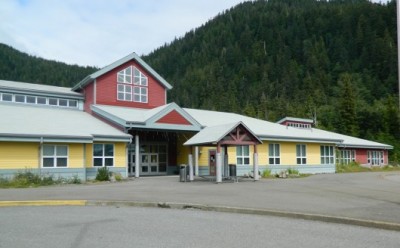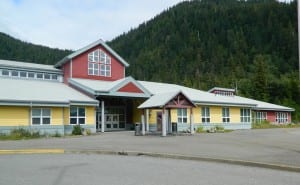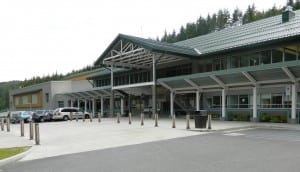The ongoing and complicated issue of contracted services to the Ketchikan School District came up again during Monday night’s Ketchikan Gateway Borough Assembly meeting.
During public comment, Bob Weinstein expressed concern that the borough’s method of accounting for those services may not be legal, and even if legal, don’t appear to be fair.
One example he gave is that the borough “charges” the school district for fire protection for the two school buildings outside of city limits, because those schools receive protection from borough-run service areas.
Weinstein says all citizens in the borough – including those within city limits – are paying the property taxes that go toward that in-kind service.
“Seems to me it’s certainly wrong and not fair to provide fire protection at the expense of all taxpayers in the borough to fund fire protection and EMS services for schools in only two service areas, and not the entire community,” he said.
Weinstein suggested that either the borough appropriate additional funds for fire and EMS to all schools, or end the practice.
Weinstein also questioned why areawide funds are used to pay for maintenance of Homestead Road, which leads to Fawn Mountain Elementary School, but also includes residential streets in that area. He also wanted more details about why the borough “charges” the school district for a flat 30 percent of the pool, rather than actual usage.
Borough officials say that the accounting practice does not affect overall funding to the school district, and that it’s merely a way of keeping track of expenses.
But, Schools Superintendent Bob Boyle says that’s not accurate.
“Local cash funding to the school district when we take out contracted services and we
take out previous payments that the borough did contribute to the school district and no longer does – in 2010, the actual cash contribution to the school district was $9 million, $18,000,” he said. “The actual cash contribution in 2015 is $6 million, $630,000.It’s a significant decrease.”
The cash contribution Boyle referred to is the amount that the borough provides to schools on top of the state’s required local contribution to public education.
Later, partly in response to Weinstein and Boyle’s points, the Borough Assembly agreed to postpone action on a resolution that changes the fee structure for recreational facilities. That resolution allocated 30 percent of the cost of the pool to the district, which Borough Manager Dan Bockhorst says has been the practice for the past several years.
“One fundamental point that often gets lost is that the aquatic center is considered by myself, and formally by DEED and others, to be a joint-use facility,” he said. “Thirty percent of it is characterized formally by DEED as an educational facility. That leaves 70 percent of it characterized as a recreational facility.”
Bockhorst says that designation by the Department of Education and Early Development means that the school district should not be treated the same as any other pool user.
The resolution will come back to the Assembly on March 7th. In the meantime, the issue will be put on the next Assembly-School Board Liaison Committee agenda for discussion.
Also last night, the Assembly introduced an ordinance that calls for increasing wastewater fees for borough residents who are hooked up to the Mountain Point and Forest Park sewer systems. The ordinance will come back for a public hearing and second vote.
If adopted, the monthly fee for that service would go up by $5. According to the borough, that would help close an annual deficit of about $86,000.











